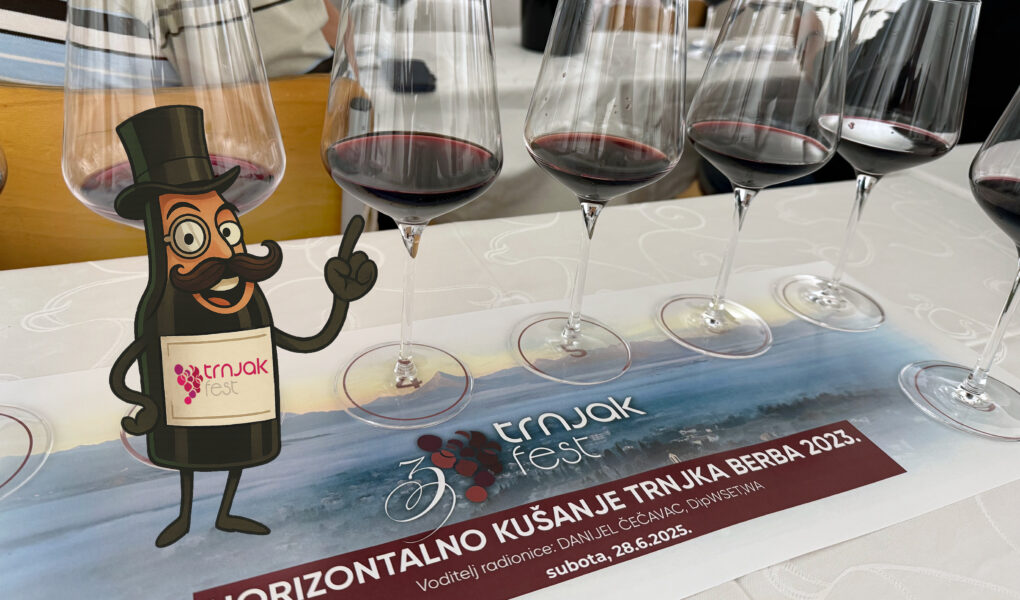This is the first in a planned series of profiles of Dalmatian indigenous grape varieties. These varieties originated in Dalmatia and are particularly suited to Dalmatian growing conditions. These profiles are somewhat technical in nature, as they are intended to provide reliable information about the varieties where little is currently available. For an introduction to indigenous varieties and why they are important, look here.
Trnjak (turn-yahk) is a black variety that has recently been selected for production as a varietal wine. Little is known about its origins, but it seems to be native to the inland Imotski region, including what is now Herzegovina.
In Imotski, Trnjak was traditionally planted with Vranac (a variety considered indigenous to the Balkans) in mixed vineyards. The blend was well balanced in the field: Vranac was the backbone, with intense color and good acidity and tannins. Trnjak brought lighter body, elegance and fruitiness to the wines.
Trnjak was first vinified on its own around the year 2011, but now some 30 wineries make a varietal Trnjak in Croatia and Herzegovina. In Imotski, plantings of this variety are increasing. Its earlier decline is likely due to the fact that its growth form is chaotic—its shoots grow in every direction rather than simply up, leading to extra work in the vineyard that would not have been welcome in leaner times. Now the variety has spread to neighboring areas in Croatia, including Makarska and especially Vrgorac. As of 2022 there were some 24 hectares of Trnjak in Dalmatia (source: APPRRR). It seems to be fairly adaptable and is considered to have good potential for additional plantings.
Defining a style for Trnjak
At a recent horizontal tasting of Trnjak, part of the third annual Trnjak Fest held in Ljubuški, Herzegovina, we tasted eight wines selected to represent the Trnjak spectrum, all vintage 2023. There was quite a difference in body and extract between the first wines and the last in the lineup. Grabovac Trnjak, for example, is a standard-bearer for the elegant, medium-bodied Trnjak with light tannins. The Gašpar, the final wine in our queue, is a big, opaque, richly extracted version with higher alcohol and tannins. This led to a lengthy discussion of what Trnjak’s style should be.
Speaking generally, Trnjak makes dry red wines of usually light to medium body (although the trend is to fuller body in Herzegovina). Alcohol is in the medium range and tannins are soft. Overall the wine is elegant and complex, often with a subtle smoky note outside of any oak influence. It is presumed to age well, but time will tell. It continues to be used in blends as well as for red and rosé varietal wines.
Is there a “natural style” for Trnjak? I don’t think one has emerged yet. But I agree with one taster who suggested that Trnjak should be what Trnjak does best, as distinct from other varieties. The common traits of the wines tasted seem to be an ethereal perfume, brisk acidity and rounded tannins. If those were combined with light color, medium body and alcohol under 14%, this taster, for one, would be satisfied.
5 recommended Trnjak wines
Among some 30 Trnjak-based reds, rosés and blends tasted at Trnjak Fest, here are five that stood out.
Bošnjak Trnjak 2023 Bošnjak poured three wines at the festival and all were uncommonly good, deftly balanced and complexly aromatic. The 2023 Trnjak was part of the above-mentioned tasting workshop. It has the perfume of violet with the spice of salvia, plus vivid blueberry and black berry-fruits that are also restrained (meaning not overripe). Almost-full body, brisk acidity and noticeable tannins, but unoaked. Also excellent were the Trnjak-based Cuvée and the Trnjak Rosé, a dry, flavorful pink.
The winery is in western Herzegovina; the wines may be found at the winery, or possibly in Dubrovnik, its only export location.
Erceg “Trnak” 2023 At the workshop tasting, the 2023 barrel sample had a fantastic vanilla-berry and floral nose, the vanilla from new French oak barrels giving a sweet impression that vanished on the palate in favor of cocoa, black berries and a lasting briary black-fruit finish. The oak is there, but even at this early stage very well integrated. A full-bodied wine, big but not for the sake of being big, with relatively mild, grainy tannins. The 2021, tasted later, showed a spicier nose, a cologne-like note that showed up on a few of these Trnjak wines. Erceg is based in Vrgorac (Croatia).
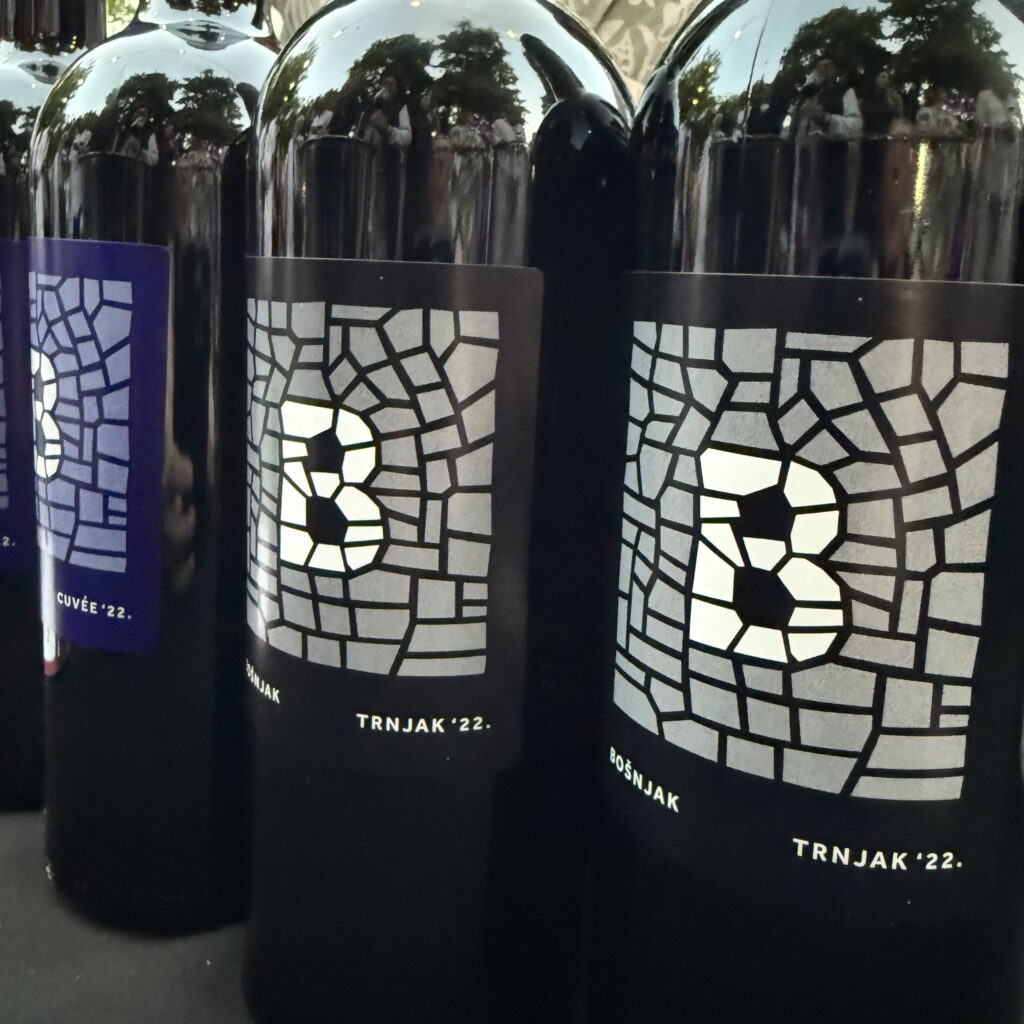

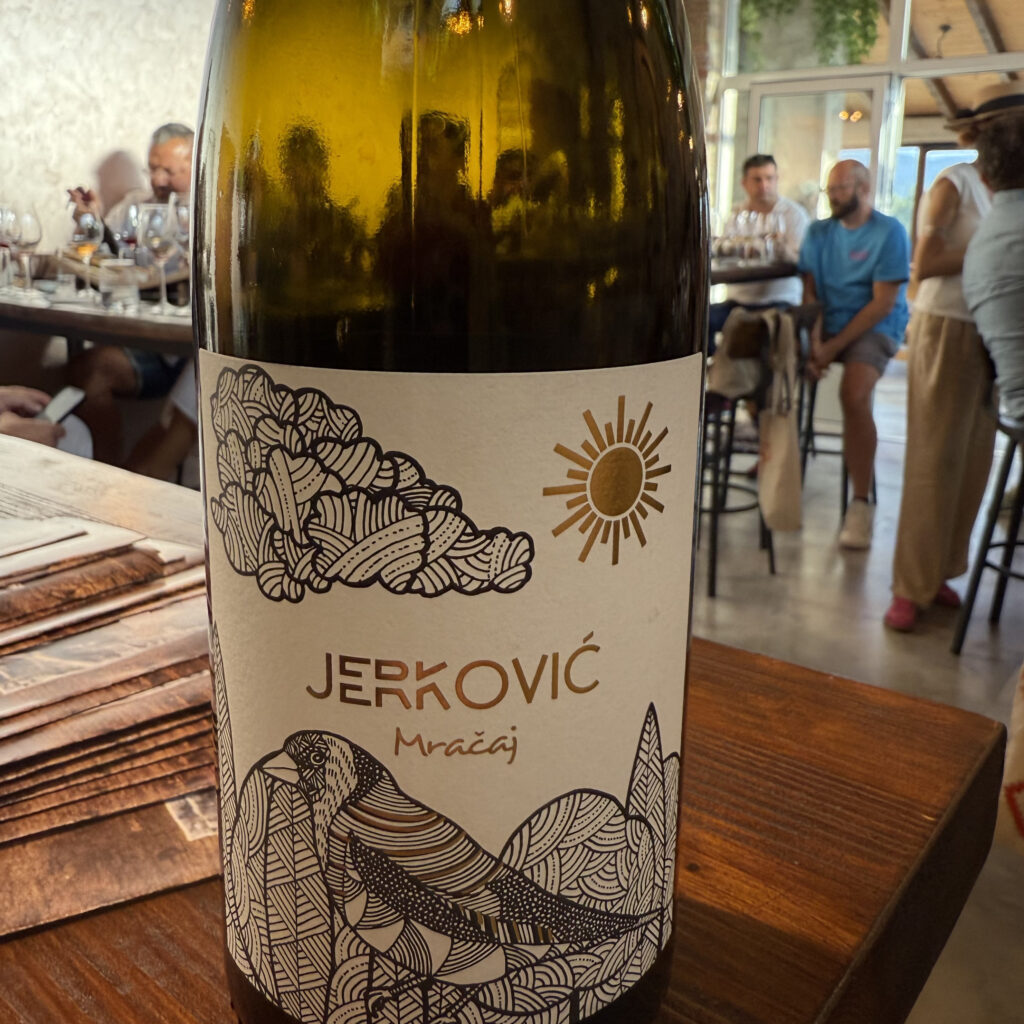
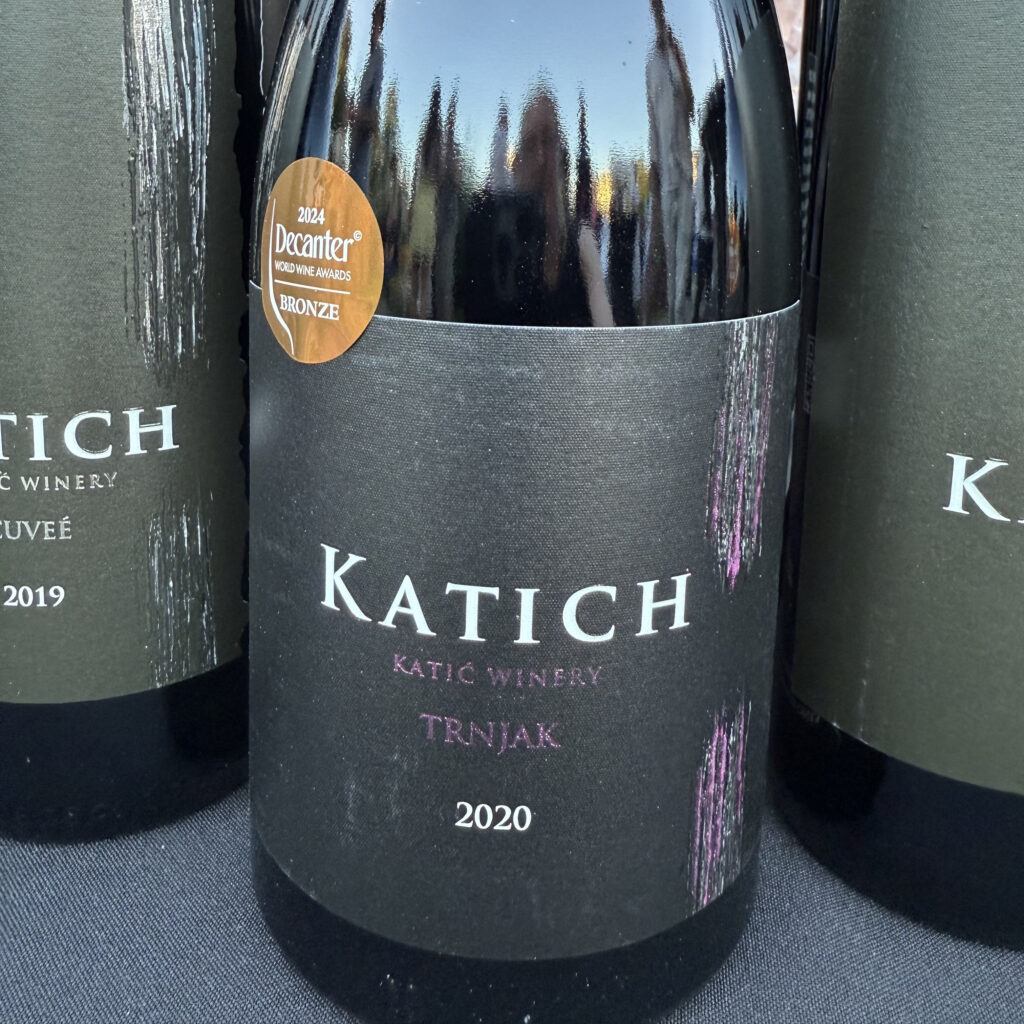
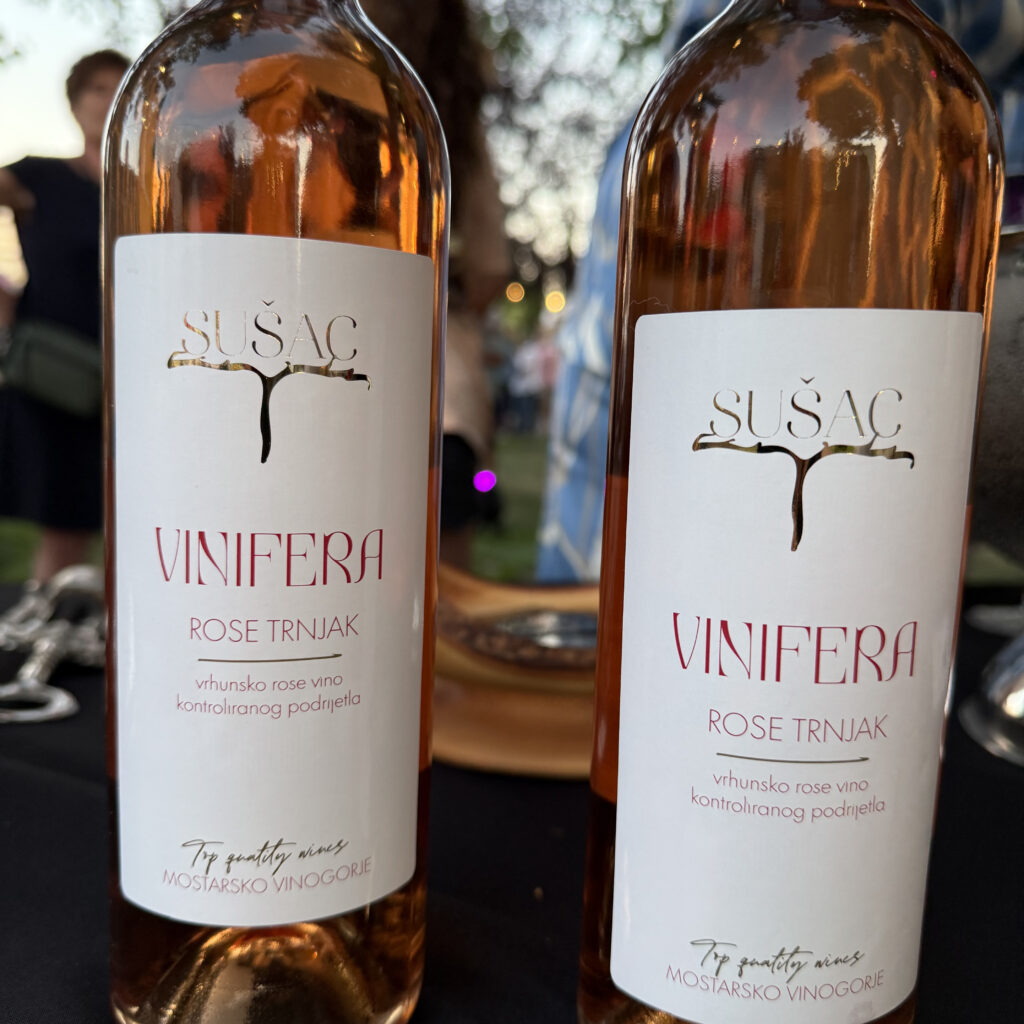
Jerković Mračaj 2022 Tasted on a winery visit in Imotski, this 10-euro blend of Trnjak and Merlot speaks to the variety’s versatility. This very light, clear red has zippy acidity and a fantastic tart cherry flavor. It’s exactly what I want to drink in summer with a light chill on it, and the acidity makes it a food lover. The winery’s Trnjak 2022 barrique red is also light in style, elegant, with a sheen of vanilla from the barrel.
Katich Trnjak 2020 On the medium-bodied end of the Trnjak spectrum, the Katich was served at a tasting dinner with a tender duck breast that complemented it perfectly. This Trnjak is spicy and earthy rather than bright cherry, although the fruit is there, with woodsy oak notes rather than vanilla. The ample acidity, present-but-not-dominant tannins and a note of bitter greens on the middle and finish make this a food wine to compare with a good Pinot Noir. Made in Imotski, Croatia.
Sušac Vinifera Rosé Trnjak 2023 This rosé made near Mostar, Herzegovina, along with the Bošnjak rosé mentioned above, is dry, fruity and flavorful, with the refreshing acidity (and moderate alcohol) that seems to be a Trnjak trademark. Spicy pomegranate notes on the Sušac seem to accurately quote the red Trnjaks tasted, without the complication of oak, lees or tannins. A pretty, rewarding pink.
The tasting portion of this article is the result of a two-day, expenses-paid press trip to Ljubuški and Trnjak Fest.
A version of this text will appear in Vino Dalmatia, an upcoming publication of Cheers Croatia Magazine and Vino Dalmacije.
[Gallery photos: Staff/CCM]
[Cover photo: Staff/CCM with thanks to #RomansWineDanube for the use of “Mr. Trnjak.” #RomansWineDanube is an innovative project to develop sustainable tourism in areas of significant ancient Roman heritage across 10 European countries.]

